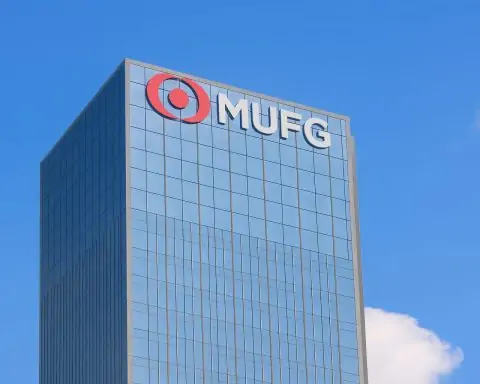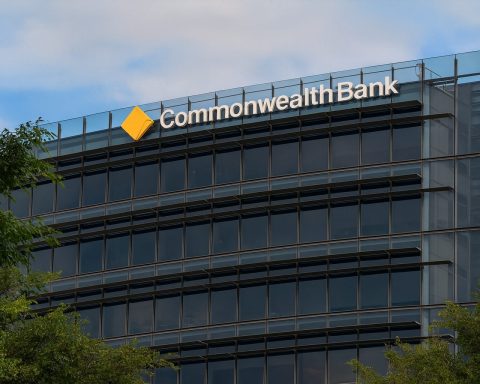The Russell 2000 index of U.S. small‑cap stocks roared higher on Tuesday, November 25, 2025, closing at 2,465.98, up 51.70 points (+2.1%). That gain put small caps firmly at the front of today’s Wall Street rally, outpacing the S&P 500, Dow Jones Industrial Average and Nasdaq Composite as investors doubled down on expectations of an imminent Federal Reserve rate cut. [1]
Russell 2000 Leads Major U.S. Indexes at the Close
At the 4:00 p.m. ET closing bell, the scoreboard looked like this: [2]
- Russell 2000: 2,465.98 (+2.1%)
- S&P 500: 6,765.88 (+0.9%)
- Dow Jones Industrial Average: 47,112.45 (+1.4%)
- Nasdaq Composite: 23,025.59 (+0.7%)
Small caps didn’t just participate in the rally – they led it decisively. According to the Associated Press, the Russell 2000 is now up about 96 points, or 4.1%, for the week and 10.6% year‑to‑date, putting it on a stronger footing after a bruising stretch earlier this autumn. [3]
Market data from MarketScreener similarly shows the index finishing the session at 2,465.98, a gain of just over 2% on the day, roughly 5% over the last five sessions, and more than 10% higher than where it started 2025. [4]
Why Small Caps Surged: Rate‑Cut Hopes and Softer Yields
Today’s move in the Russell 2000 was part of a wider relief rally across U.S. equities, driven by one big theme: falling bond yields and rising conviction that the Fed will cut rates at its next meeting.
The Associated Press reports that stocks climbed again as traders bet more confidently on a coming cut to the Fed’s benchmark interest rate, with easing Treasury yields doing much of the heavy lifting for risk assets. [5] Lower yields make future earnings more valuable in discounted‑cash‑flow models and reduce financing costs – effects that matter more for smaller, more leveraged companies than for mega‑cap tech behemoths.
The Los Angeles Times noted that the Russell 2000 “jumped around 2.1% to lead the market,” explicitly tying the move to hopes for easier policy and the prospect of lower borrowing costs for smaller borrowers. [6]
MarketWatch’s real‑time coverage similarly highlighted that traders were digesting delayed economic data, tracking the odds of a Fed rate cut, and watching bond yields drift lower as the day progressed. [7] A separate futures‑focused analysis from OneUp Trader described a “turnaround” tone in U.S. equities more broadly, with Fed cut bets helping to stabilize risk sentiment after November’s volatility. [8]
Put simply: cheaper money is back in fashion, and that’s usually when small‑cap indices like the Russell 2000 start to flex.
Biggest 3‑Day Pop Since April After Weeks of Pain
Today’s surge didn’t come out of nowhere. It capped a three‑day rebound that’s starting to look statistically significant.
A MarketWatch update flagged that the Russell 2000 has logged its largest three‑session gain since April, climbing about 6.3% over the last three trading days, with Tuesday’s performance delivering the latest leg higher. [9]
That bounce follows a notably rough patch: a Reuters summary late last week pointed out that the Russell 2000 had fallen for four straight weeks, its longest losing streak since March, underscoring how out of favor small caps had become heading into this latest rally. [10]
From a sentiment perspective, the past month looks like a classic mean‑reversion setup:
- Positioning and flows had rotated heavily toward mega‑cap tech.
- Small caps lagged badly as investors fretted about growth, higher rates and tighter credit.
- A modest pivot in rate expectations is now sparking catch‑up buying in the Russell 2000.
Under the Hood: Retail and Consumer Small Caps Explode Higher
The top of today’s Russell 2000 leaderboard was dominated by consumer and retail names, a sign that investors are warming up to the idea of a reasonably resilient U.S. consumer heading into the holiday season.
MarketScreener’s Russell 2000 dashboard shows that some of the index’s largest percentage gainers included: [11]
- Kohl’s (KSS) – Shares surged more than 30% after the department‑store chain reported a surprise third‑quarter profit and sharply raised its full‑year 2025 earnings outlook. Reuters and Nasdaq reports noted upgraded guidance on margins and sales growth, which helped fuel the stock’s biggest single‑day jump in years.
- Abercrombie & Fitch (ANF) – The apparel retailer jumped roughly 30%+ following stronger‑than‑expected Q3 results and a raised full‑year forecast, with particular strength at its Hollister brand. Multiple outlets cited double‑digit stock gains as investors rewarded improving execution and better‑than‑feared demand.
- Barnes & Noble Education (BNED) – Shares in the campus‑bookstore operator climbed over 20% intraday after the company completed an internal accounting investigation, reaffirmed growth, and released upbeat preliminary revenue figures for fiscal 2025 and early 2026.
These names are all Russell 2000 components, and their outsized gains acted like rocket boosters for the small‑cap index. [12]
At the other end of the spectrum, MarketScreener’s Russell 2000 heatmap shows that some health‑care and specialty names lagged badly despite the broad rally. Small‑cap biotech and medical‑device names such as Sellas Life Sciences, Embecta and Cullinan Therapeutics were among the sharpest decliners, dropping between roughly 7% and 9%, while beauty group Waldencast slumped by more than 10%. [13]
So even on a strong index day, dispersion within the Russell 2000 remained extreme – classic small‑cap behavior.
Technical Picture: Russell 2000 Futures Reclaim Key Resistance
Traders watching Russell 2000 futures (RTY) saw a key technical story unfold beneath the headline index numbers.
A detailed technical note from OneUp Trader published early Tuesday laid out several important levels: [14]
- 2,415–2,420: “Reclaim zone” – a band the futures needed to retake to signal a genuine bullish shift.
- 2,455–2,470: Region around the 50‑day moving average, flagged as the next major hurdle for bulls.
- 2,500: Psychological round‑number resistance.
- 2,360–2,350: November low / key demand area.
- ~2,227: Near the 200‑day moving average, described as major long‑term support.
With the cash index now closing around 2,466, the Russell 2000 has effectively pushed into that 50‑day moving‑average zone. That doesn’t guarantee a sustained uptrend, but it does mark a notable break from the pattern of lower highs that dominated much of November.
For technically minded traders, the takeaway is simple:
- Holding above roughly 2,415 keeps the short‑term bullish case alive.
- A decisive move above 2,470–2,500 would start to look like a trend reversal rather than just a sharp rebound.
Fundamentals: Small‑Cap Earnings Are Finally Improving
Beyond daily price action, there are signs that the earnings backdrop for small caps has turned a corner.
FTSE Russell’s Q3 2025 Russell 2000 Earnings Dashboard shows: [15]
- Of 1,657 Russell 2000 companies that had reported by November 20, about 62% beat analyst earnings expectations.
- Blended year‑over‑year earnings growth for the index stands near 61.9% for Q3 2025.
- Revenue growth is more modest at roughly 3.7%, or 4.5% excluding energy, suggesting that much of the earnings rebound is being driven by improved margins, cost control and normalization after prior‑year weakness.
That mix – strong earnings growth on relatively modest revenue gains – is textbook small‑cap behavior in a late‑cycle environment: companies squeeze more out of each dollar, but top‑line expansion is still constrained by a choppy macro backdrop.
Diamond Hill Capital’s latest small‑cap strategy letter, for instance, highlighted both ongoing freight‑recession headwinds at trucking‑linked names like Orion S.A. and pockets of strong demand at aerospace supplier Ducommun, underscoring how uneven the small‑cap recovery remains across industries. [16]
Valuation and Flows: Russell 2000 Still Looks “Cheap” vs. Big Caps
Despite this week’s rally, some strategists argue that U.S. small caps remain undervalued relative to large‑cap peers.
An analysis of the Vanguard Russell 2000 ETF (VTWO) – a widely used tracker of the index – found that it recently traded at a price‑to‑earnings ratio around 17.4, versus roughly 28.5 for a core S&P 500 ETF such as VOO. [17] In other words, investors are still paying a much richer multiple for blue‑chip megacaps than for the average small‑cap company, despite the latter’s faster projected earnings growth.
Ironically, the same analysis pointed out that only about 20% of Vanguard’s ETFs have seen negative net flows in 2025, and the Russell 2000 tracker is one of them. So even as valuations and fundamentals improve, investor money has been slow to return to the space.
StockStory’s feature “1 Russell 2000 Stock on Our Watchlist and 2 We Avoid” captured the mood nicely: small caps can be a “goldmine” for investors willing to do the work, but many businesses carry higher execution risk, thinner balance sheets and more volatile earnings paths than large‑cap peers. [18]
That combination – discounted valuations, better earnings and cautious flows – is often what long‑term small‑cap bulls look for.
How Today’s Move Fits into the Broader Market Story
Yahoo Finance and TheStreet both framed Tuesday’s session as a return to “rally mode” on Wall Street, even as high‑profile names like Nvidia lagged. Their joint coverage of “Stock Market Today: Russell 2000, Dow Jump More than 1% Despite Nvidia’s Decline; Inflation Worries” emphasized that: [19]
- Cyclical and rate‑sensitive areas of the market – small caps, financials, consumer cyclicals – led the gains.
- Mega‑cap tech was mixed, with some AI‑linked leaders pulling back after enormous year‑to‑date runs.
- Inflation data and consumer‑confidence readings remain in focus, but for now, rate‑cut optimism is overshadowing growth worries.
Add in the Reuters note that the Russell 2000 hit its highest level in more than a week by late morning, and MarketWatch’s observation that this is the strongest three‑day run since April, and today’s picture starts to look less like noise and more like a potential turning point for small caps. [20]
Key Numbers for the Russell 2000 on November 25, 2025
- Close: 2,465.98
- Daily move: +51.70 points (+2.1%)
- Week to date: +96.39 points (about +4.1%)
- Year to date: +235.82 points (around +10.6%) [21]
- Last three sessions: roughly +6.3%, biggest three‑day gain since April [22]
What This Means for Investors
For investors tracking the Russell 2000 and U.S. small‑cap stocks, today’s action sends a few clear signals:
- Macro driver: The market is trading the interest‑rate narrative, not just earnings. As long as bond yields drift lower and Fed cut odds stay elevated, small caps can remain in the leadership seat. [23]
- Positioning tailwind: Weeks of underperformance and ETF outflows mean positioning is still relatively light in small caps, leaving room for further catch‑up rallies if sentiment keeps improving. [24]
- Selectivity still matters: Today’s wild dispersion – retail names exploding higher while some health‑care names slumped – is a reminder that the Russell 2000 is not a monolith. Stock‑picking and sector tilts remain crucial. [25]
Of course, a three‑day spurt doesn’t erase the risks: small‑cap balance sheets are more exposed if the economy slows sharply, and the Fed could yet surprise with a slower or shallower easing path than futures markets currently imply. But if today’s tape is any indication, the Russell 2000 is squarely back on traders’ radar heading into the final weeks of 2025.
(This article is for informational purposes only and does not constitute investment advice.)
References
1. apnews.com, 2. apnews.com, 3. apnews.com, 4. www.marketscreener.com, 5. apnews.com, 6. www.latimes.com, 7. www.marketwatch.com, 8. blog.oneuptrader.com, 9. www.marketwatch.com, 10. www.reuters.com, 11. www.marketscreener.com, 12. www.marketscreener.com, 13. www.marketscreener.com, 14. blog.oneuptrader.com, 15. lipperalpha.refinitiv.com, 16. www.insidermonkey.com, 17. www.fool.com, 18. stockstory.org, 19. finance.yahoo.com, 20. www.marketscreener.com, 21. apnews.com, 22. www.marketwatch.com, 23. apnews.com, 24. www.fool.com, 25. www.marketscreener.com








